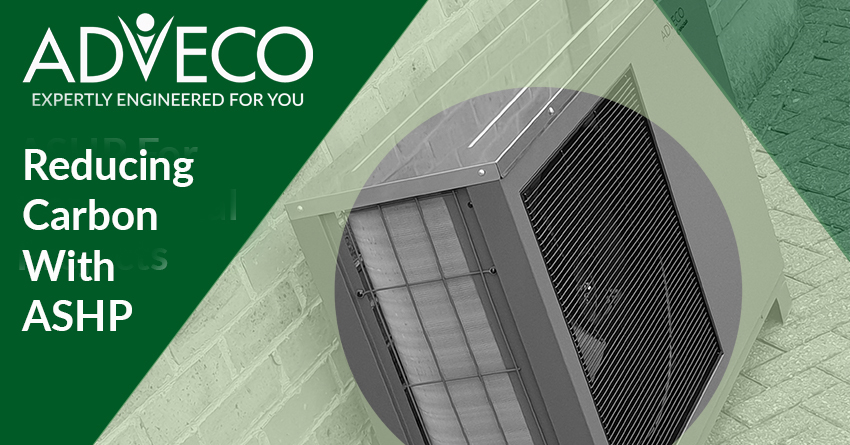It is estimated that 40% of CO₂ emissions can come from commercial heating alone and finding new and innovative ways to heat premises is at the top of the list for many businesses.
 Commercial sites – education, healthcare, retail, logistics, offices, hospitality and leisure – seeking to reduce both their carbon footprint and energy bills have with air source heat pumps (ASHP) an opportunity to gain a long-term cost-effective means to heat water and space.
Commercial sites – education, healthcare, retail, logistics, offices, hospitality and leisure – seeking to reduce both their carbon footprint and energy bills have with air source heat pumps (ASHP) an opportunity to gain a long-term cost-effective means to heat water and space.
Whilst the cost of installing an ASHP will vary depending on the size and complexity of the commercial premises, there is no doubt that despite the initial outlay on a heat pump system there are significant savings that a business can make. Particularly if it is currently using electricity, oil, solid fuel or liquid gas to heat premises. When correctly installed by a qualified supplier, a commercial heat pump with minimal, regular maintenance should typically last 10 to 25 years. And, commercial businesses can still benefit from the Renewable Heat Incentive (RHI) initiative from the Department of Energy and Climate Change that pays per kilowatt-hour produced from sites accepted onto the scheme prior to March 2021.
Initial costs can be seen as prohibitive, but once the break-even point has been reached there is potential for significant savings and a solid return on investment. This, of course, assumes that a commercial property is suitable for an ASHP installation which will require space adjacent to an exterior wall or a flat roof space to situate the unit.
As we have seen, ASHPs offer a great many benefits, but there are also limitations, but it is important to recognise that with all low carbon technologies there are technical limitations that will not allow them to work effectively as a standalone heat source without substantial infrastructure changes.
Market insight has shown a trend for hybrid heat pump and solar thermal systems, which is a direct response to the limitations of solar alone, which is applicable to daylight hours only and can be limited during winter by the shorter days. Solar Thermal therefore only ever makes up a proportion of the load. Solar Thermal can also be a complex install so is not applicable for refurbishments where time is at a premium or a site is not secure as it can be at risk from damaged. M-CHP, cogenerating onsite heat and power, will be used as a baseload product to maximise its running hours and is certainly an option when it comes to addressing peak hour demands but may be cost-prohibitive.
A heat pump could well be standalone in a new build, but we would assume that most commercial buildings do not have sufficient electrical supply, and upgrading the existing electrical infrastructure can immediately become cost-prohibitive for a project.
Using a modelled ‘benchmark’ existing hotel site, with an average of 224 daily guests, each using an average of 50 litres of hot water per day provided by a traditional boiler-fired heating system we can assess the potential of ASHP when replacing the traditional boiler system. A commercial ASHP offering optimum operation (91,611 kWh electrical input for 190,773 kWh thermal output to meet annual DHW demand of 4,088,000 litres) will be limited to 55 degrees, the maximum stored water temperature is 50 degrees and therefore the heat pump output restricted to approximately 191 MWh. The annual cost savings can be modelled at £1,127.27 giving a system payback of 23.1 years if we estimate equipment costs to be £16,000, with £10,000 of installation costs. Carbon savings are positive, compared to smaller heat pumps which model with negligible gains, in this case saving 28,237 kg CO₂/annum which is truly advantageous.
What this example demonstrates is that there is a core business decision to be made when balancing carbon savings against project cost payback for standalone ASHP systems. Existing commercial buildings can achieve significant carbon savings through the utilisation of the correct technology.
Reducing carbon emissions is ethically the correct thing to do, and ASHP, Solar Thermal and m-CHP will all achieve savings to varying levels, but realistically the cost of the technology must also be considered when making any decisions regarding significant upgrades to the building’s energy systems, which means, unless there is major governmental legislative intervention or funding, there will almost certainly be a compromise of cost, carbon saving and payback.













